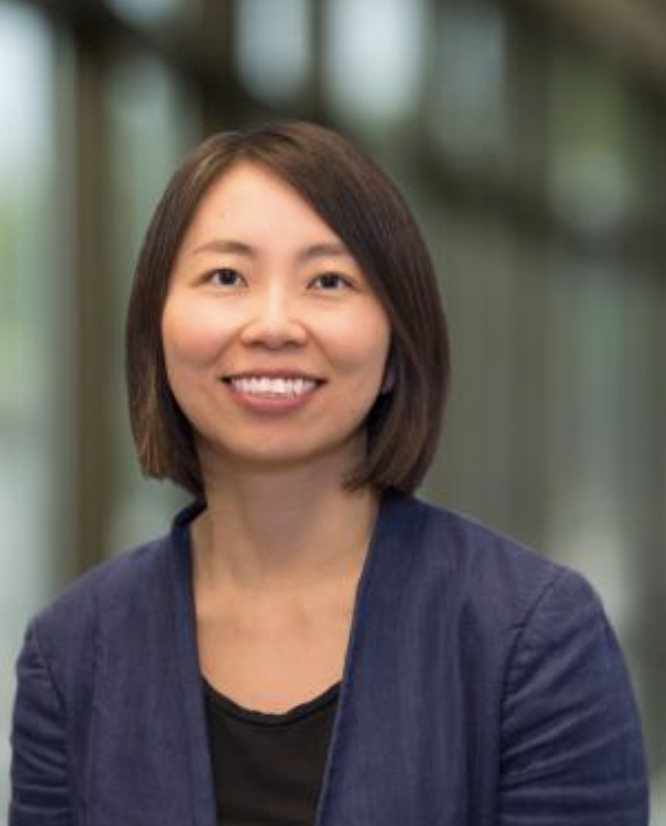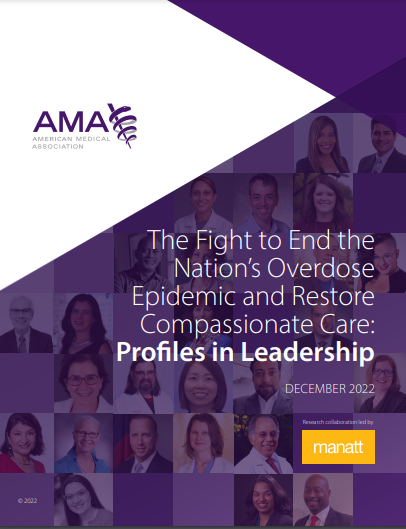original article on manatt.com.
link to the Profiles in Leadership report.
Dr. Lin's work is featured on page 29:
Expanding access to treatment through telehealth
Profile of Lewei Allison Lin, MD, MS
Addiction psychiatrist Lewei Allison Lin, MD, MS, will do whatever she can to reach and keep her patients with a substance use disorder (SUD) engaged in care—whether that means telehealth visits (i.e., video or audio-only visits) or in person.
“Barely 10 percent of individuals with a substance use disorder receive any type of care in this country,” said Dr. Lin. “We should make sure there are no closed doors for getting help, and we should also research and learn from policy changes to ensure we are best meeting our patients’ needs.”
Dr. Lin highlighted how telehealth visits have been helpful for many of her patients, but that was the case even before the COVID-19 pandemic.
“I would love to see every patient in person,” said Dr. Lin. “But not everyone can get to my office. For some patients, it meant having to take three buses to come for a visit and sometimes they were coming weekly for counseling. No wonder they were struggling to stay in care.
If it’s audio-only or audio with video, I’m thrilled to stay in contact and keep my patients engaged.”
Keeping patients engaged could mean counseling, medications to treat opioid use disorder (MOUDs), connections to primary care or addressing any other needs a patient might have.
Dr. Lin’s most recent research findings focused on the impact of policy changes for MOUDs in the Veterans Health Administration (VA) during COVID-19. In a national, retrospective study, she found that:
• The number of patients receiving buprenorphine for opioid use disorder (OUD) increased from 13,415 in March 2019 to 15,339 in February 2021.
• By February 2021, audio-only visits were used by the most patients (50.2%; 4,456 visits), followed by video visits (32.4%; 2,870 visits) and in-person visits (17.4%; 1,544 visits).
Dr. Lin and her colleagues found COVID-19 policy changes were associated with significant ongoing increases in the number of patients receiving buprenorphine, but the delivery of care shifted to telehealth visits, suggesting that any reversal of COVID-19 policies must be carefully considered.
“I think those of us in the addiction field knew that telehealth could help with access, which is a huge challenge in the field, but the research helps provide evidence and helps to advocate for continued flexibility in how care is delivered—and what care should be supported.”
Those “continued flexibilities” include decreased barriers to starting and continuing care for an individual on buprenorphine for opioid use disorder via audio-only and video telehealth.
She acknowledges some tension in the medical community about what is lost when a patient and doctor do not occupy shared space in a clinic. “Every patient is different. Understandably, some patients and some clinicians prefer in-person visits, but this has to be balanced with what is feasible to help patients stay engaged in care.” She said she understands that some practices—such as verifying toxicology screens—may be more difficult in a telehealth visit, and we need to help clinicians think about how to assess patients virtually.
As the pandemic continues to evolve, Dr. Lin fears that there may be a push to return to the way we delivered care pre-pandemic.
“We all want human connection,” said Dr. Lin. “But we also have to listen to the data that tell us patients respond differently and access care differently. Telehealth is not for everyone, but it’s clear that it is providing connection and helping many. Moving forward, patients and clinicians should have options, and determining what approaches will help patients stay engaged in care should be a big factor."
Lewei Allison Lin, MD, MS:
“My approach to addiction care is built on a foundation that good care is not measured by whether the patient is using substances one day or another. It is instead a shared goal and building an ongoing relationship with the patient to help them regain their lives and functioning. One of the biggest challenges is that the symptoms of addiction and stigma surrounding it makes it really hard for people to get help. The most important thing is how do we help patients feel like they can reach out and come to treatment especially when they’re struggling? That’s the disease of addiction – and my goal is to find ways to keep people engaged when they need us the most.”
link to the full Profiles in Leadership report.





